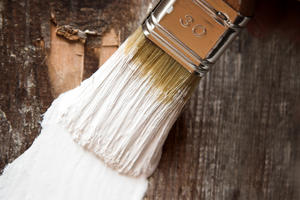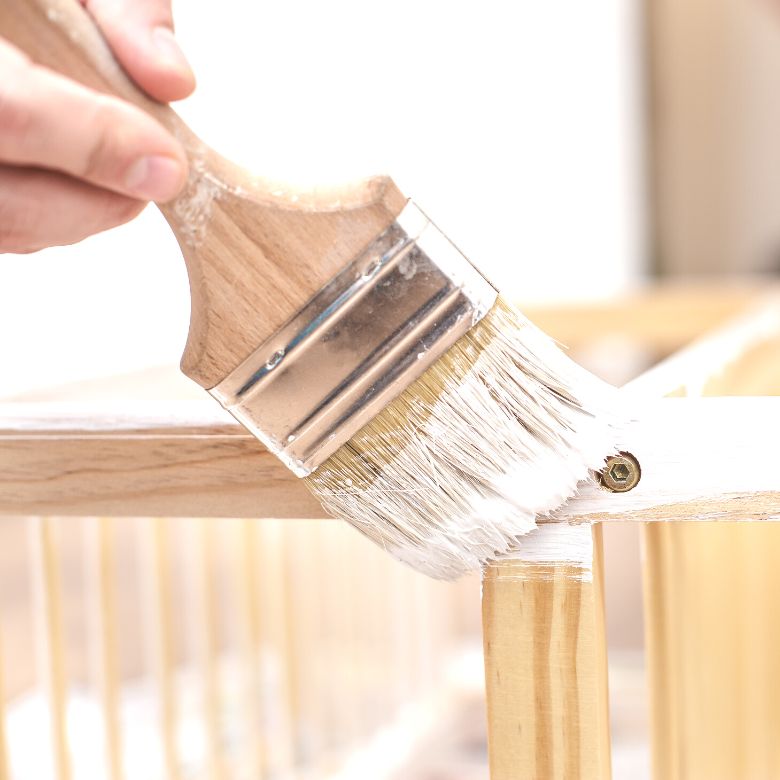How to refurbish a used wooden floor or antique furniture? We should try the method called leaching. It can bring spectacular effects in the form of tasteful, antique surfaces. What is wood leaching and what should we know about it? Here is a collection of the most important information.

What is leach (or lye) and what are its properties?
‘Leaching’ or ‘to leach’ is the English-language cousin of the German word Lauge, meaning an aqueous solution of sodium or potassium hydroxide (so-called potash lye or caustic soda lye – caustic soda). In simple terms, it means any whitening agent that contains soda lye.
Lye has been used for centuries as an ingredient in soaps and as a bleaching and washing agent. An alkaline substance, it is widely applied in the manufacture of cement, paints, paper and fabrics. It is also useful for petroleum processing and wastewater treatment.
What are the characteristics of lye? It is colourless and odourless. It has the form of a liquid that:
- shows strong caustic properties,
- dissolves very well in water,
- is hygroscopic (absorbs water from the environment),
- causes metal corrosion.
The use of a hazardous lye without adequate safeguards or personal protective equipment causes serious poisoning and burns.
How to make lye for wood?
Potash lye is an aqueous solution of potassium hydroxide. This substance used to be obtained from wood ash combined with water (which is also indicated by the German name “Pot-asche”, meaning ash in a pot). Today, potassium hydroxide (KOH) is available in, for example, traditional brick-and-mortar stores or online chemical shops or wholesale stores.
Soda lye can be prepared by mixing sodium hydroxide (caustic soda) and water in the proper proportions. Sodium hydroxide (NaOH) can be easily found in construction and DIY stores or online; it is best to buy it as a ready aqueous solution.
Note: The Internet and source literature offer a lot of guidance on how to prepare home-made wood lye step by step. We should remember, however, that an attempt to make such a caustic solution at home is not the best idea. If we don’t have adequate facilities or a well-ventilated room, we should give it up. It is better to choose a ready preparation for wood leaching.
Ready preparations for wood leaching
Today there are many commercially available lye-based agents intended for the renovation and improvement of wood, whether indoors or outdoors. Such solutions are ready for use. They require no additional dilution or improvement. The available leaching agents can be divided into two groups:
- products for leaching softwood (which keep the bright colour of resin material)
- formulations designed for hardwood.
Leaching agents act in many ways: they bleach, give the effect of patina, and effectively prevent wooden covers from yellowing. Lye makes it possible to obtain stylish, antique surfaces that match rustic, vintage and industrial interior designs.

Which wooden surfaces can be bleached?
Wood bleaching agents have a very broad range of application. They can be used for the treatment of board floors, wooden stairs, antique doors, or balustrades. Bleaching also proves to be excellent for ceiling boards or the front doors of furniture. The procedure can also be applied on outdoor elements such as fences, porches, pergolas or garden houses (before buying the lye, make sure that it can be used outdoors).
Caustic lye effectively removes façade paints and varnishes. Besides, bleaching is often followed by the proper stage of painting wooden inside or outside walls.
What does wood leaching involve?
Without a doubt, leaching is one of the simplest and oldest techniques for bleaching and refurbishing wood. Using a paintbrush or paint roller, we just have to apply the solution on a raw (bare, unfinished), clean, dry surface , and then wait until it cures. At the last stage, when the lye is already cured, the wooden surface should be additionally impregnated with an oil or lacquer.
How does lye affect wood? When the solution is applied on a wooden surface, it starts to gradually dissolve and brighten it. Surfaces covered by lye recover their aesthetic qualities. Bleaching helps eliminate fungi and other potentially harmful micro-organisms that exist in wood.